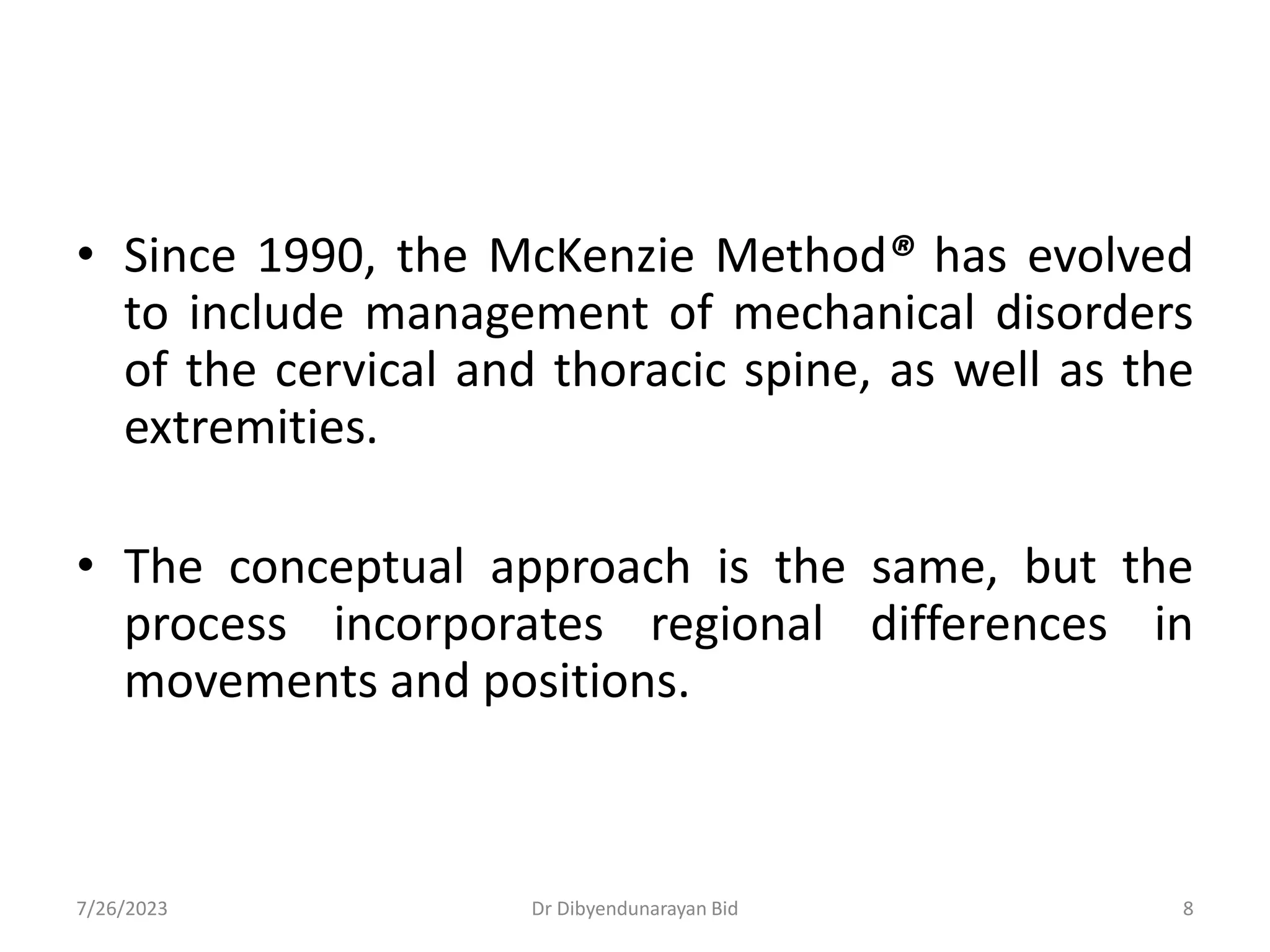- Robin McKenzie developed the McKenzie Method of Mechanical Diagnosis and Therapy after observing a patient with sciatica who experienced pain relief in lumbar extension, contrary to typical treatment at the time.
- The McKenzie Method involves classifying patients based on their symptomatic response to movement and positioning into derangement, dysfunction, or postural syndromes to guide individualized treatment.
- Examination involves a thorough patient history and mechanical examination to determine the optimal positioning or movements to address a patient's symptoms based on their classification.






















































































































































